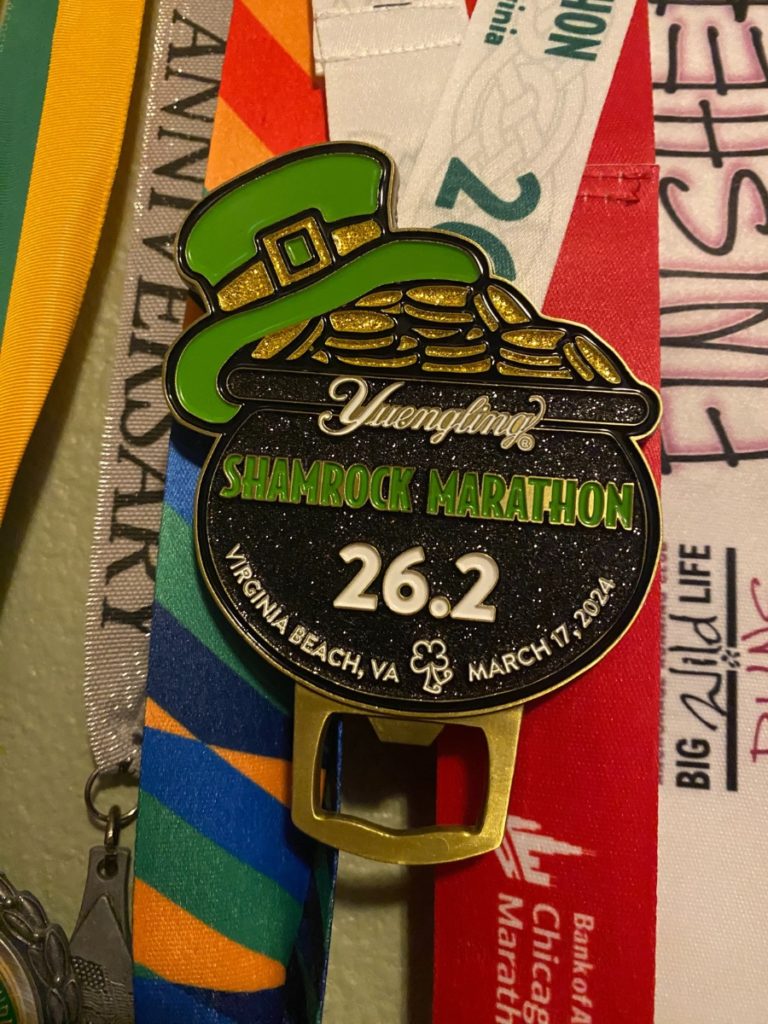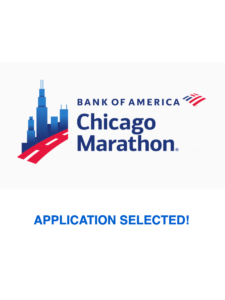
Wow, it has been a month since I ran the Yuengling Shamrock Marathon, and I still feel like I am on cloud 9. To have completed a marathon after all this time trying even to get the training in has meant the world to me. I can completely relate to this quote by the late Fred Lebow, founder of the New York City Marathon:
“Few things in life match the thrill of a marathon.”
After the marathon, I took a week off and then returned to running. Initially, while still recovering from the marathon, I only ran 3-4 miles 3-4 times a week. Still ambling along at a slow pace, I was feeling confused about what I should do now. How will I ever qualify for Boston if I continue to run most of my runs at this slow pace? At the same time, how can I increase my speed without injury and setbacks? Am I even at a point where I could qualify for Boston with enough of a buffer to get in? Maybe I need more time. Maybe I could run some shorter races and work on speed.
Debating this with myself was not getting me anywhere. I wasn’t sure Coach Laura believed I was ready to try and qualify for Boston because I got little feedback even though I had mentioned it to her a couple of times over the past year. This only added to my confusion about what I should do. But, when I was more direct and let her know Boston was my goal, she acknowledged that being just 2 minutes off from a BQ, with a fairly easy run at Shamrock, Boston was doable. She sent me this game plan, and she was very encouraging.
We would keep easy run paces the same, and incorporate more faster running. This structure would include a midweek workout (like we had been doing before the calf injury, although likely more time at intensity) and eventually some marathon pace built into the long runs (particularly in the two months before Chicago).
Four days of running worked well, so we would keep that structure. The plan could look like:
- Monday: rest
- Tuesday: easy run
- Wednesday: workout run + strength (probably more PT-focused and core strength)
- Thursday: rest
- Friday: easy run + strides
- Saturday: long run (eventually evolving where every other week had MP in it)
- Sunday: strength (including some plyometrics) plus cross-training
What a Chicago build could realistically look like, with the goal of a BQ:- October: Chicago Marathon- August and September: marathon training continues, with workout focus mostly on marathon pace or slightly faster. – June and July: marathon training starts, with workout focus on runs around 5K, 10K and half marathon pace- May: we may do a baseline test such as a mile time trial or a Copper test (VO2max field test), to give a data on your upper end paces (since we have data from the marathon on easy paces). Bring in some strides, some fartleks, and maybe things like plyometrics into strength. Keep working on calf strength.- April: easy miles, gradually rebuilding volume as you fully recover from the marathon.
With Chicago, I would set your marathon goal pace around 10:15/mile. This is realistic for you. The rationale: GPS can read up to 26.7 on that course, and then I add in a bit of cushion beyond that. We would fine tune this pace based on how you respond to training (ie if workouts progress well and you seem really comfortable at 10:00/mile, that might become marathon pace).
I was so excited to receive this overview of what training for the Chicago Marathon (my BQ attempt) might look like. I can do this! Oh, BTW, did I mention that I randomly entered the Chicago lottery last year and actually got in?

I have a lot of work to do, but I am excited to get started. In the meantime, I am relishing the memories and experiences of the Yuengling Shamrock Marathon. After all I have been through these past few years, finishing this marathon means so much to me on so many levels. Next year…?

Leave a Reply